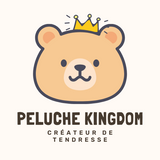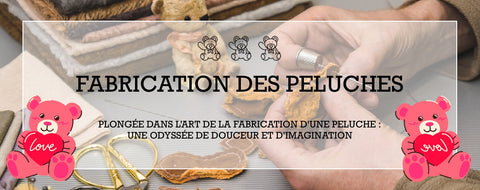
The Octopus, an Ace of Camouflage and Intelligence
of reading - words
The common octopus is said to be unique in its appearance alone, with its massive bulbous head, large eyes 👀 and eight distinctive arms. But by far the most striking feature of the octopus is the wide range of techniques it uses to avoid or outwit its attackers .
Belonging to cephalopods (a subgroup of marine invertebrates), known for their high intelligence, their uncanny ability to blend into their surroundings, their unique style of locomotion and their ability to squirt ink, octopuses are one of the sea's most fascinating creatures 🤩 , found in all the world's oceans and in the coastal waters of every continent.
The size of octopuses varies greatly: the smallest, Octopus Arborescens, measures around 5 cm long 📏, while the largest species can reach 5.4 meters long and have an arm span of almost 9 meters. They therefore have eight contractile arms.
Each arm carries two rows of fleshy suction cups which are capable of great holding force 💪. The arms are connected at their base by a web of fabric called a skirt, in the center of which is the mouth. The latter organ has a pair of sharp, horny beaks and a file-shaped organ, the radula , which is used to pierce shells and grate flesh.

1) The Octopus in 10 Seconds Top Chrono
- COMMON NAME: Octopus
- SCIENTIFIC NAME: Octopus, Tremoctopus, Enteroctopus, Eledone, Pteroctopus, and many others
- BASIC GROUP OF ANIMALS: Invertebrates
- DIET: Carnivore 🍤
- SIZE: 3cm - 5m
- WEIGHT: 1g - 280kg
- LIFESPAN: One to three years
- HABITAT: All oceans; coastal waters of all continents
- POPULATION: There are at least 289 species of octopus; no population estimate is possible and therefore available.
2) The Difference between Octopus, Octopus and Squid
A- The Octopus and the Octopus
In popular language we tend to use the word octopus and octopus to designate the same animal, rightly or wrongly? 🤔
The general public is right to confuse these two terms, because they refer to the same cephalopod 🐙 which inhabits the oceans around the world. The words octopus and octopus are synonyms!

B- The Octopus and the Squid
Things get complicated, unlike the previous case, octopus or octopus are not synonymous words with the word squid 🦑. The octopus and the squid have a rather similar appearance, they are not the same animal . The squid or also called squid is more elongated than the octopus and has 10 tentacles against 8 for the octopus. This is why it belongs to the group of marine decapod cephalopods , which includes all molluscs with 10 tentacles and thus more than 300 species!

3) An Ace of Camouflage
His first and most amazing line of defense is his ability to hide in plain sight 👻. Thanks to a network of pigment cells and specialized muscles in its skin, this invertebrate can almost instantly adapt to the colors, patterns, and even textures of its environment. Predators such as sharks, eels and dolphins pass by without even noticing.
In more detail, its skin is covered in three types of specialized skin cells that can quickly change color, reflectivity, and opacity, allowing this invertebrate to easily blend into its surroundings . “Chromatophores” are responsible for the colors red 🔴, orange, yellow, brown and black ⚫; “leucophores” imitate white ⚪; and the “iridophores” are reflective, and therefore perfectly suited to camouflage. Thanks to this arsenal of cells, some octopuses can make themselves indistinguishable from algae.

4) Unparalleled Intelligence
It's one of the weirdest creatures on Earth, and not just because it looks so different. The octopus can camouflage itself in the blink of an eye, pass its entire body through a hole the size of a thumb,... and its brain? An octopus has a large central brain and eight mini-brains , one in each arm! As author and naturalist Sy Montgomery says, who believes their intelligence is almost off the charts, “Octopuses are so brilliant” ✨.
Octopuses are the only marine animals, aside from whales and pinnipeds , that demonstrate primitive problem-solving and pattern recognition skills . But whatever type of intelligence these cephalopods possess, it is different from that of humans 👨🎓, probably closer to a cat.

Two-thirds of an octopus's neurons are located along the length of its arms , rather than its brain, and there is no convincing evidence that these invertebrates are capable of communicating with others of their species. There's a reason why many science fiction works (such as the book and movie "Arrival") feature aliens loosely modeled on octopuses.
The veined octopus (Amphioctopus marginatus) is also known for its intelligence. In 2009, biologists reported observing the animals digging half-coconut husks from the ocean floor and transporting them to use as portable shelters . Such behavior is considered by biologists to be the first documented example of tool use by an invertebrate.

5) Diet and Night Hunting
Octopuses are carnivorous and adults feed mainly on small fish 🐟 , crabs 🦀 , clams, snails and other octopuses , although some feed on plankton 🦐 . They generally feed alone and at night, pouncing on their prey and wrapping it in the web between their arms. Some octopuses use a more or less toxic venom which they inject into their prey with a beak similar to that of a bird; they can also use their beak to penetrate and split hard shells. They sometimes use their ink to disorient their victims before attacking them.
6) Octopus Dens
Octopuses are nocturnal hunters, and they spend part of their daytime ☀ in dens, usually holes in shell beds or other substrate, vertical pits sometimes with multiple openings. If the seabed is stable enough to allow it, it can reach a depth of around 40 cm . Octopus dens are designed by a single octopus, but they can be reused by subsequent generations and some species are co-occupied by the male and female for a few hours.

In the laboratory, octopuses build dens from shells (Nautilus, Strombus, barnacles), or artificial terracotta flower pots, glass bottles 🍾, PVC tubes, custom blown glass. They therefore have the ability to adapt with whatever is available .
Some species have colonies, grouped together in a den. For example, the mournful octopus (Octopus Tetricus) lives in groups of around 15 animals , in situations where there is plenty of food, many predators 🦈 and few opportunities to have dens. Clusters of gloomy octopus dens are dug into shell cavities, a pile of shells constructed by octopuses from their prey.

7) Anatomy
A- The Tentacles and the Arms
The octopus is essentially a mollusk without a shell but which has eight arms and three hearts 💗. When it comes to cephalopods, marine biologists are careful to distinguish between “arms” and “tentacles” . If the invertebrate structure has suckers along its entire length, it is called an arm; if it only has suckers at its end, it is called a tentacle. By this standard, most octopuses have eight arms and no tentacles, while two other cephalopods, cuttlefish and squid, have eight arms and two tentacles.
B- Hearts and Blood
All vertebrate animals have a heart, but the octopus has three : one that pumps blood throughout the cephalopod's body (including the arms), and two that pump blood into the gills, the organs that allow the octopus to breathe underwater 🌬 while harvesting oxygen. And there's another key difference: The main component of octopus blood is hemocyanin, which contains copper atoms, rather than hemoglobin, which contains iron atoms. This is why octopus blood is blue rather than red.

8) Reproduction and Offspring: We must ensure succession!
Octopuses have a very short life, between one and three years, and they are dedicated to educating 🏫 the next generation. Mating takes place when the male approaches the female. The male has a specially modified arm, usually the right third arm, that has a special tip called a hectocotyl that he uses to transfer sperm to the female's oviduct through spermatophores (sperm packets). It can impregnate multiple females and females can be impregnated by more than one male.
The male dies shortly after mating. Most octopuses mate during the winter and the female searches for a suitable nesting site and breeds a few weeks later. By laying the eggs 🥚 (about 0.3 cm long) in festoons , chains that are attached to the rock or coral or to the walls of the den. Depending on the species, the total number of eggs can be over 100,000 . During the four to eight weeks it takes for the larvae to hatch, the female monitors and takes care of them, aerating them, cleaning them with her suckers and agitating them with water. A few days after hatching, the mother octopus also dies.

Some benthic (octopus species living in benthos ) and littoral species produce smaller numbers of larger eggs which house a more developed larva. Upon hatching, the tiny octopuses, which closely resemble their parents, begin their lives as plankton , meaning they spend several weeks drifting in clouds of plankton. If not eaten by a passing whale, the octopus larva feeds on copepods , larval crabs and sea seal larvae, until they are developed enough to take refuge on the bottom of the sea. ocean 🌊.
9) Behavior
A- More sophisticated than a Pagani
Much like an underwater sports car, the Octopus has three gears . If not in a particular hurry, this cephalopod will walk lazily using its arms and suction cups on the ocean floor. If he feels a little more rushed 🏎, he will swim actively by flexing his arms and body.

And if he's really in a hurry 🚀 (for example, because he's just been spotted by a hungry shark), he takes some water from his coat and expels a stream of water from his body cavity and away as quickly as possible, often squirting out a disorienting drop of ink at the same time.
B- Defense Systems: On the run from a hungry predator
When threatened by predators, most octopuses release a thick cloud of black ink , composed primarily of melanin (the same pigment that gives humans their skin and hair color) to obscure the view of its attacker , giving him time ⏱ to swim away.

This cloud isn't just a visual "smokescreen" that allows the octopus to escape unnoticed. It also interferes with predators' sense of smell , making the fleeing octopus more difficult to track. Sharks, which can sniff out small droplets of blood from hundreds of meters away, are particularly vulnerable to this type of olfactory attack 🤧.
In addition to ink, octopuses can slip their soft bodies into impossibly small cracks and crevices where predators cannot track them. The octopus can squeeze through any hole ⭕ as long as it's no smaller than its beak, the only hard part of its body.

If all else fails, she may lose an arm to escape a predator's grasp and have it regrow later without permanent damage. It also has beak-like jaws that can deliver a nasty bite, and poisonous saliva 🐍, used primarily to subdue prey.
10) Only a few Hundred Species...
Nearly 300 different species of octopus have been identified to date, with more being identified every year. The largest identified octopus is the Giant Pacific Octopus 🦖 (Enteroctopus Dofleini), whose adult adults weigh about 50 kg and have long trailing arms 4.3 m long and a total body length of about 5 Mr.

However, there is compelling 🕵♀ evidence of larger-than-usual giant Pacific octopuses , including one specimen that may have weighed up to 275kg. The smallest (so far) is the pygmy star-sucking octopus (Octopus Wolfi), which measures less than 3 cm and weighs less than a gram.
Most species average the size of the common octopus (Octopus vulgaris), which reaches between 30 and 90 cm and weighs between 3 and 10 kg.

11) An Endangered Species?
None of the octopuses are considered threatened ✅ by the International Union for Conservation of Nature (IUCN) or the ECOS online environmental conservation system . The IUCN has not listed any of the octopuses.
12)The Common Octopus
The best-known octopus is the common octopus, a medium-sized animal that is widely distributed in tropical and temperate seas around the world . It lives in holes or crevices along rocky bottoms 🌅 and is secretive and withdrawn in nature. It can reach a length of 1.5 m and a weight of 15 kg, although the averages are much lower. It feeds mainly on crabs and other crustaceans.

This species is believed to be the most intelligent of all invertebrate animals. This octopus has highly developed pigment cells and can change skin color to an astonishing degree and with great rapidity. Each pigment cell (chromatophore) is individually innervated from the brain.










